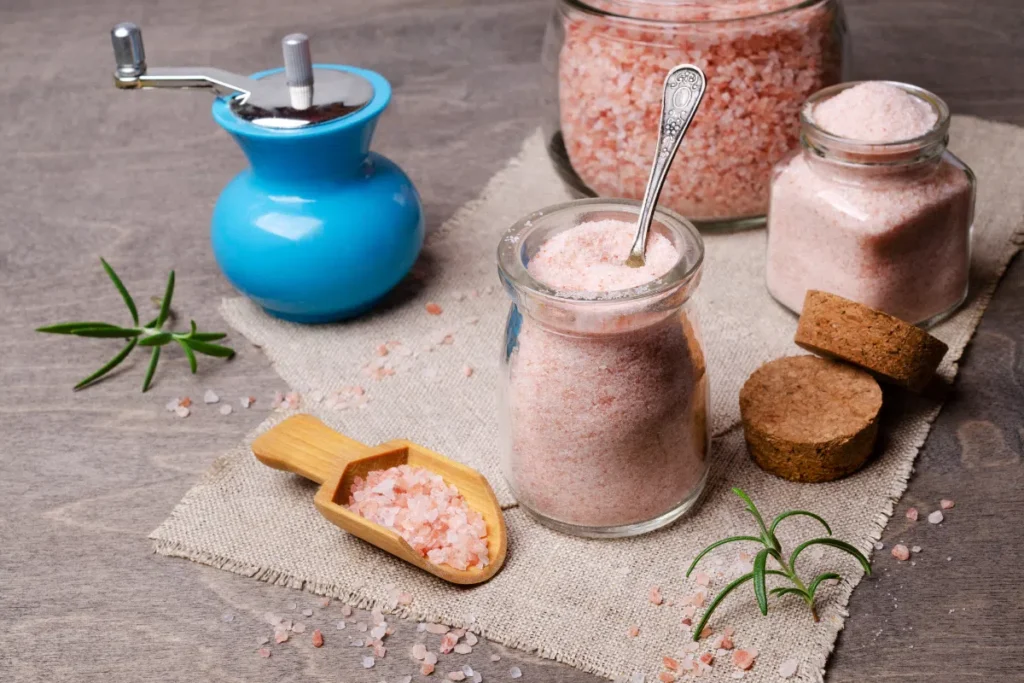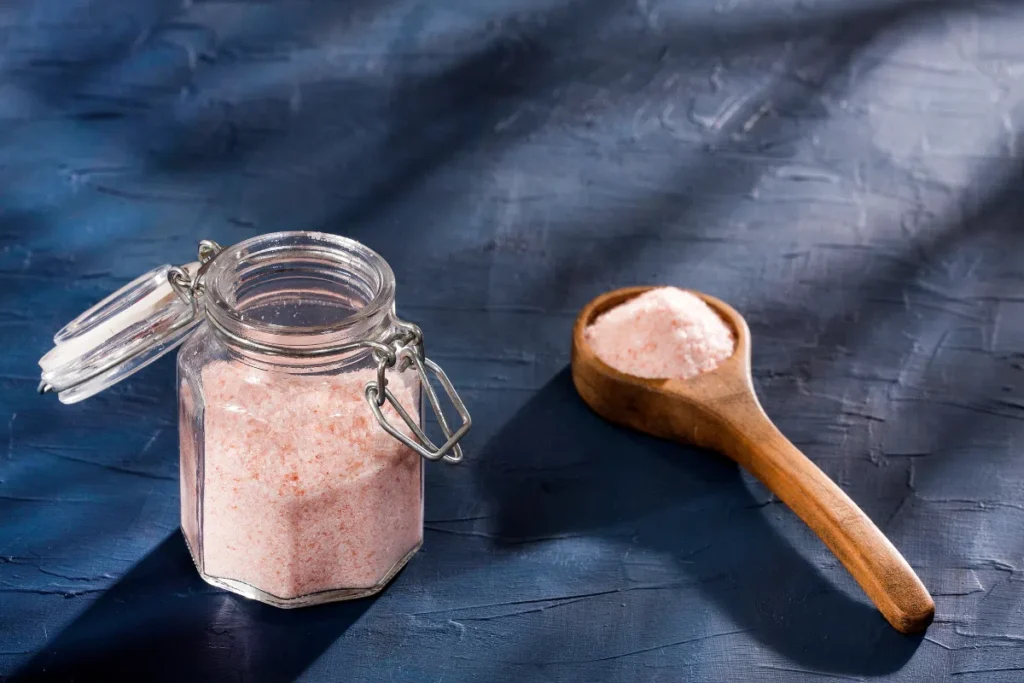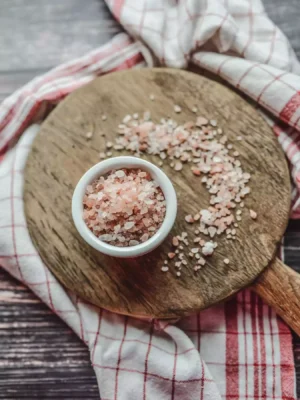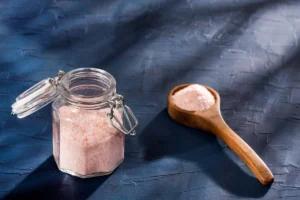Himalayan pink salt is one of nature’s purest minerals — prized not only for its subtle flavor but also for its natural beauty and mineral richness. Hand-mined from ancient salt deposits deep within Pakistan’s Khewra Salt Range, it remains free from industrial refining, making it a favorite for chefs and home cooks alike. But to keep it that way, it’s essential to know how to store it properly. Though salt doesn’t spoil, how it’s kept determines how well it retains its color, texture, and integrity over time.
Let’s explore the best ways to store Himalayan pink salt for long-term use while keeping it fresh, dry, and full of its natural charm.
Why Does Himalayan Pink Salt Need Proper Storage?
While salt is naturally resistant to microbial growth, Himalayan pink salt is hygroscopic — meaning it absorbs moisture from the air. Over time, this can lead to clumping, fading of color, or even a slightly damp texture. None of these changes make it unsafe, but they can affect how easily it blends, sprinkles, or dissolves in cooking.
Proper storage preserves the salt’s crystalline texture and ensures it remains as vibrant and easy to use as the day it was purchased. For anyone who cooks regularly or stores salt in bulk, understanding this small but important detail makes a big difference in maintaining quality.
What Is the Best Container for Storing Pink Salt?
The best container for Himalayan pink salt depends on your environment and how often you use it. Chefs and home cooks alike agree that airtight containers are key to keeping salt dry and clump-free.
- Glass jars with tight lids are ideal for everyday kitchen use. They’re non-reactive, easy to clean, and allow you to see the salt’s natural pink tones.
- Ceramic containers also work beautifully, especially if you prefer a more traditional, decorative look.
- Food-grade stainless steel tins are another excellent choice for larger quantities stored in pantries or professional kitchens.
Avoid plastic containers if possible — over time, they can retain odors or allow microscopic moisture to seep in. A clean, dry, and non-porous container is your salt’s best friend.
Should Pink Salt Be Stored Differently in Humid Environments?
Yes. If you live in a humid area or cook often in a steamy kitchen, you’ll need a few extra precautions. Salt naturally attracts water vapor, so the higher the humidity, the more likely it is to clump or harden.
To prevent this:
- Keep your salt away from stoves, dishwashers, or sinks.
- Store it in a cupboard or drawer instead of leaving it near open air.
- Add a small piece of uncooked rice or a food-safe silica packet inside the container to absorb excess moisture.
These small habits can extend the freshness of your salt significantly. The goal isn’t to seal it off completely from the world — just to limit its contact with humid air.
How Long Can Himalayan Pink Salt Last if Stored Correctly?

Technically, pure salt never expires. What changes over time are its texture and appearance, not its safety. If kept away from moisture and contaminants, Himalayan pink salt can last indefinitely without losing flavor or purity.
However, for best results, it’s recommended to rotate your salt stock every few years — especially if stored in bulk — to keep it visually appealing and easy to handle. When stored correctly, pink salt remains just as beautiful and functional decades later as when it was first mined.
Can Moisture or Air Exposure Affect Pink Salt’s Quality?
Absolutely. Pink salt exposed to air and moisture gradually loses its crisp crystalline edges. It might start forming tiny clumps or even fine dust at the bottom of the jar. While this doesn’t ruin the salt chemically, it can change how it interacts with food.
Too much exposure can also dull the salt’s signature blush color, as moisture activates trace minerals like iron oxide. The best solution? Keep your container sealed when not in use, and always scoop salt out with a clean, dry spoon. Avoid dipping wet fingers or utensils directly into the jar — it only takes a drop of water to start a chain reaction of clumping.
Does the Texture (Coarse or Fine) Change How You Store It?
Yes, texture makes a difference in how pink salt behaves during storage.
Coarse Himalayan Pink Salt is made of larger crystals, which tend to resist moisture a bit better because of their density. However, if exposed for too long, even coarse grains can clump together. For long-term storage, they should be kept in sealed jars or mills with tight-fitting lids. You can explore Luumin’s Coarse Himalayan Pink Salt — a popular choice among chefs who appreciate its purity and rich mineral balance.
Fine Himalayan Pink Salt, on the other hand, has smaller grains and a larger surface area, making it more prone to moisture absorption. It’s best stored in smaller, airtight containers and kept in cool, dry places. You can learn more about Fine Himalayan Pink Salt and how its delicate texture enhances everyday cooking.
The rule of thumb: the finer the salt, the tighter the storage needs to be.
How Do Chefs and Culinary Experts Store Pink Salt Professionally?
Professional kitchens often store Himalayan pink salt in bulk, sometimes in 10–25 kg sacks. To preserve quality, chefs transfer smaller portions into airtight containers for daily use while keeping the rest sealed and dry in pantry storage.
Some even use vacuum-sealed pouches or food-grade barrels to avoid contact with kitchen humidity. In high-end restaurants, where visual presentation matters, salt is often kept in glass jars near workstations — but only enough for a day or two of service. The rest stays safely stored away.
Culinary experts also stress the importance of labeling and rotation — ensuring that older salt batches are used first. This keeps the product fresh and visually consistent, especially when serving customers who value purity and presentation.
Final Thoughts: Keeping Your Pink Salt Pure for Years
Himalayan pink salt may be one of the oldest minerals on Earth, but with proper storage, it can remain pristine for generations. The key is simple: protect it from moisture, air, and impurities. Store it in a clean, airtight, non-reactive container, and it will continue to season your dishes beautifully for years to come.
At Luumin, we believe in honoring the journey of every grain — from the mountains of Pakistan to kitchens around the world. Whether you prefer coarse or fine varieties, proper care ensures that your salt retains its natural beauty and flavor.
For chefs, restaurants, or retailers looking to explore bulk or specialty storage options, you can always contact Luumin to learn more about preserving Himalayan pink salt’s authentic quality and heritage.



